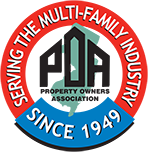By the law firm of Levy, Ehrlich & Petriello, P.C.
The Lead-Based Paint Renovation, Repair and Painting Program is a federal regulatory program affecting contractors, property managers, and others who disturb painted surfaces. It applies to residential houses, apartments, and child-occupied facilities such as schools and day-care centers built before 1978. It includes pre-renovation education requirements as well as training, certification, and work practice requirements.
– Pre-renovation education requirements already in effect include:
Contractors, property managers, and others who perform renovations for compensation in residential houses, apartments, and child-occupied facilities built before 1978 are required to distribute a lead pamphlet before starting renovation work.
– Training, certification, and work practice requirements become effective April 22, 2010:
Firms are required to be certified, their employees must be trained in use of lead-safe work practices, and lead-safe work practices that minimize occupants’ exposure to lead hazards must be followed.
Renovation is broadly defined as any activity that disturbs painted surfaces and includes most repair, remodeling, and maintenance activities, including window replacement.
In general, anyone who is paid to perform work that disturbs paint in housing and child-occupied facilities built before 1978 must comply with the requirements. This may include, but is not limited to: Residential rental property owners/managers
General contractors
Special trade contractors, including
• Painters
• Plumbers
• Carpenters
• Electricians
Training, Certification, and Work Practice Requirements– Effective after April 22, 2010.
• Firms must be certified.
• Renovators must be trained.
• Lead-safe work practices must be followed. Examples of these practices include:
o Work-area containment to prevent dust and debris from leaving the work area.
o Prohibition of certain work practices like open-flame burning and the use of power tools without HEPA exhaust control.
o Thorough clean up followed by a verification procedure to minimize exposure to lead-based paint hazards.
• The training, certification, and work practice requirements do not apply where the firm obtained a signed statement from the owner that all of the following are met:
o The renovation will occur in the owner’s residence;
o No woman who is pregnant resides there;
o The housing is not a child-occupied facility; and
o The owner acknowledges that the renovation firm will not be required to use the work practices contained in the rule.
If certain criteria come into play, you may need to set up "lead safe practices" on the jobs site like sealing up the work area with plastic sheeting and notification of anyone present about the dangers of lead dust.
Further guidance may be found in the EPA’s compliance guide which can be found at their website at: http://www.epa.gov/lead/pubs/sbcomplianceguide.pdf
If the Rule applies, the renovator must comply with the following (Note: there are additional work practices specific to interior and exterior renovations):
(A) Renovations must be performed by certified firms using certified renovators.
(B) Firms must post signs clearly defining the work area and warning occupants and other persons not involved in renovation activities to remain outside of the work area. These signs should be in the language of the occupants.
(C) Prior to the renovation, the firm must contain the work area so that no dust or debris leaves the work area while the renovation is being performed.
(D) Work practices listed below are prohibited during a renovation:
1. Open-flame burning or torching of lead-based paint;
2. Use of machines that remove lead-based paint through high speed operation such as sanding, grinding, power planing, needle gun, abrasive blasting, or sandblasting, unless such machines are used with HEPA exhaust control; and
3. Operating a heat gun on lead-based paint at temperatures of 1100 degrees Fahrenheit or higher.
(E) Waste from renovations:
1. Waste from renovation activities must be contained to prevent releases of dust and debris before the waste is removed from the work area for storage or disposal.
2. At the conclusion of each work day and at the conclusion of the renovation, waste that has been collected from renovation activities must be stored to prevent access to and the release of dust and debris.
3. Waste transported from renovation activities must be contained to prevent release of dust and debris.
Failure to comply can result in penalties of up to $32,500.00 per day per violation.
These rules only apply to renovations for compensation, therefore a homeowner completing their own renovations will not have to comply; HOWEVER, if work is done by a contractor and the homeowner is notified of the presence of lead paint, the homeowner may be obligated to notify a prospective purchaser of this condition at the time the home is sold. Temporarily unoccupied or vacant rental housing is not exempt from the requirements of the RRP Rule. With respect to landlords, EPA believes that there are two circumstances where work being done in pre-1978 apartment is for compensation such that the Landlord must be a certified firm and use (or be) a certified renovator. First, if the Landlord does the renovation him or herself, then the Landlord must have firm and renovator certification. Second if an employee of the Landlord does the renovation work, then the landlord must have firm certification and the employee must be a certified renovator.
However, if the landlord hires a renovation firm to perform the renovation, the landlord does not need firm or renovator certification, but the firm hired by the landlord must be certified and must perform the renovation using a certified renovator that directs and provides on-the-job training to any workers that are not certified renovators.
This was prepared by the law firm of Levy, Ehrlich & Petriello, P.C. headquartered in Newark, New Jersey. It is not, nor is it intended to be, legal advice. You should consult an attorney or other qualified professional to discuss your particular matter. The firm can be reached at (973) 643-0040 or on the web at www.LEP-lawyers.com.
